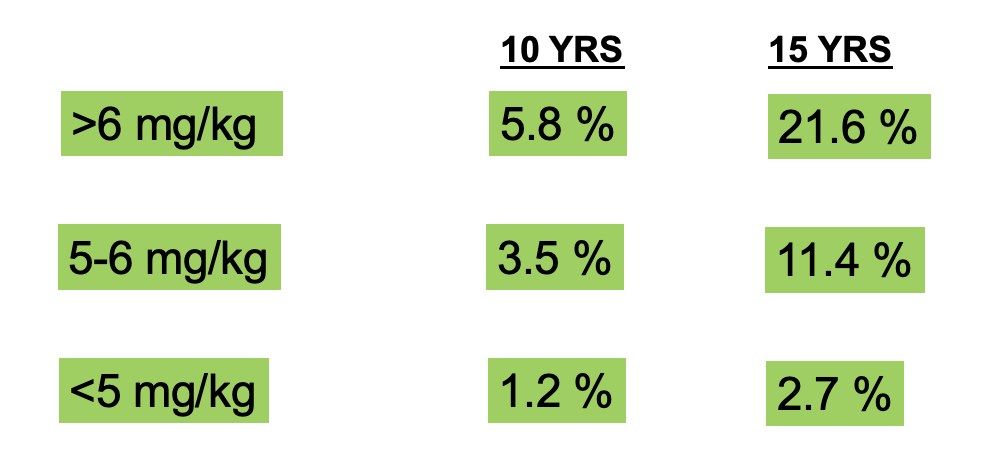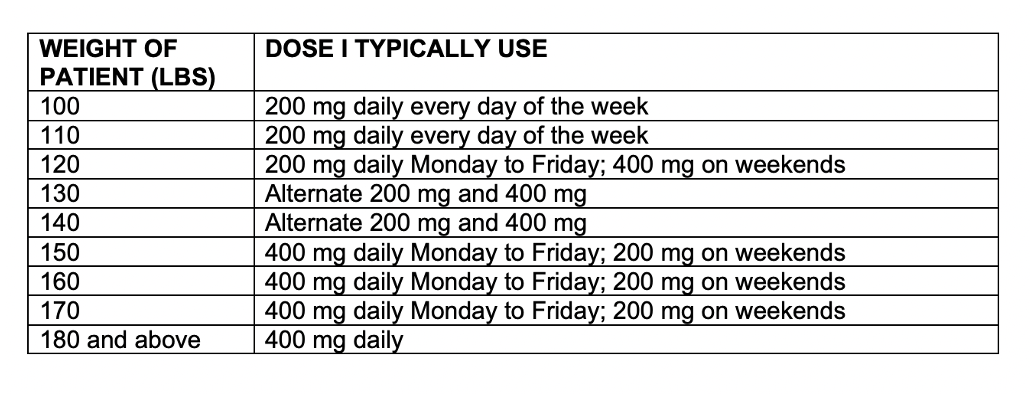Hydroxychloroquine and Retinopathy: What is the real risk ?
Risk of Hydroxychloroquine Related Retinopathy at 15 Years is 2.7 % for those Using 5 mg per kg or Less
Hydroxychlorquine is used for many hair loss conditions including lichen planopilaris, frontal fibrosing alopecia, discoid lupus, systemic lupus and dermatomyositis. Once of the feared complications of hydroxychloroquine is retinopathy - and this can sometimes lead to vision loss.
A new 2023 study by Melles and Colleagues suggests at 2.7 % of patient develop retinopathy after 15 years of use. This is lower than prior 2014 estimates of retinopathy risk.
Studies by Melles and Marmor helped quantify the risk of retinopathy and influenced guidelines for dosing put out by many societies. For daily consumption of 4.0 to 5.0 mg/kg, the prevalence of retinal toxicity remained less than 2% within the first 10 years of use but was found to rise to almost 20% after 20 years of use. The American Academy of Ophthalmology proposed that dosing of 5 mg per kg or less are considered reasonable doses and eye examinations for those at low risk can be done at baseline and then annually starting at year 5.
Melles et al 2023
Melles and colleagues again set out to characterize the long-term risk for incident hydroxychloroquine retinopathy.
The author studied all patients aged 18 years or older who received hydroxychloroquine for 5 or more years between 2004 and 2020 and had guideline-recommended serial retinopathy screening. Patients included in the study had a range of rheumatologic diagnoses including rheumatoid arthritis, other chronic inflammatory arthritis, SLE, Sjögren syndrome, other systemic connective tissue diseases, cutaneous lupus, or other dermatologic conditions. Overall, the most common indications for hydroxychloroquine in this study were rheumatoid arthritis and SLE.
There were 3325 patients included in the study. 620 (18.6%) used more than 6 mg/kg hydroxychloroquine. 532 (16.0%) used 5 to 6 mg/kg and 2173 (65.4%) used 5 mg/kg or less
Risk of Retinopathy at 10 and 15 years
The risk of retinopathy at 10 and 15 years using various doses of HCQ is shown below:
Conclusions and Discussion
Overall, 2.7 % of patients using recommended dosing of 5 mg per kg or less had retinopathy at 15 years and this was 1.1 % when taking into account specifically moderate and severe cases. The authors point out that most cases of retinopathy were of the mild, typically asymptomatic stage, whereas severe bull's-eye retinopathy was rare.
The long-term risk for incident hydroxychloroquine retinopathy observed in this real-world study was lower than the estimated risk based on the 2014 prevalence study that led to the current hydroxychloroquine screening and dosing guidelines
The authors point out that “most mild and moderate cases are typically asymptomatic and unlikely to progress to severe retinopathy after hydroxychloroquine is withdrawn.”
Finally, the authors, who are leaders in the area of HCQ retinopathy proposed that under current screening recommendations and dosing patterns, loss of visual acuity from hydroxychloroquine retinopathy should be rare.”
Hydroxychloroquine Dosing
The following is a table we use in clinic for HCQ dosing.
REFERENCE
Donovan J. Hydroxychloroquine and Retinal Safety: New Guidelines
Donovan J. Hydroxychloroquine Dosing: 1 in 5 Patients Still Receiving too High of a Dose
Ronald B Melles RB et al. Hydroxychloroquine Dose and Risk for Incident Retinopathy : A Cohort Study. Ann Intern Med. 2023 Jan 17.
Melles & Marmor. The risk of toxic retinopathy in patients on long-term hydroxychloroquine therapy. . JAMA Ophthalmol. 2014 Dec;132(12):1453-60.
This article was written by Dr. Jeff Donovan, a Canadian and US board certified dermatologist specializing exclusively in hair loss.





